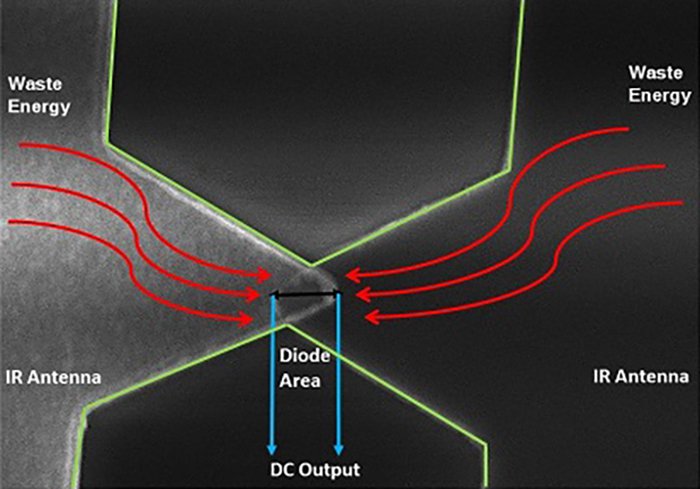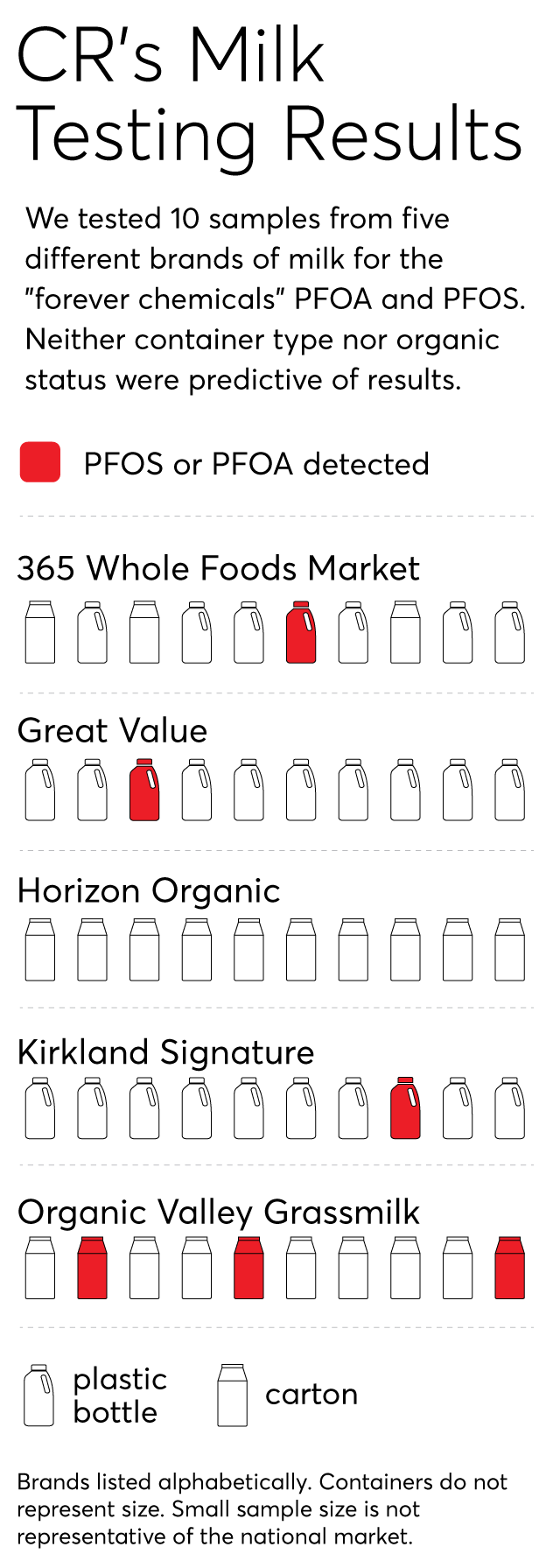Quantum Innovations Fuel a New Era in Energy Harvesting

Breaking Boundaries: Quantum Energy Harvesting and Its Potential
The recent breakthrough in energy harvesting marks a pivotal turning point in the world of sustainable technology. Researchers from Japan have introduced an innovative approach that pushes beyond the traditional limits defined by thermodynamics, offering a fresh perspective on converting waste heat into useful electricity. In this opinion editorial, we take a closer look at the scientific development, its implications for low-power electronics and quantum computing, and the potential challenges that lie ahead on this exciting journey.
This breakthrough centers on harnessing non-thermal quantum states using a special Tomonaga-Luttinger (TL) liquid—a one-dimensional electron system. Instead of letting heat spread out evenly, the system retains a high-energy, non-thermal state when heat is applied. This unique behavior not only leads to a higher electromotive force, but it also opens the door for more efficient energy conversion methods that surpass conventional thermodynamic limits.
By breaking free of traditional constraints such as the Carnot and Curzon-Ahlborn efficiency limits, the research pioneers have managed to extract more power from waste heat. This achievement may soon impact not just laboratory methods, but also industrial-scale applications in electronics, manufacturing, and even automotive sectors.
Non-Thermal TL Liquid: A Game Changer in Energy Conversion
The core concept behind the innovation is the use of a non-thermal TL liquid. Unlike typical systems wherein energy quickly disperses through thermal equilibrium, the non-thermal TL liquid preserves its high-energy state before fully distributing heat. This property is critical for achieving significantly higher conversion efficiencies.
To put it simply, the researchers have been able to direct waste heat—usually a byproduct that dissipates without purpose—into creating a stored electrical potential. This fresh approach could redefine energy harvesting as we know it, bridging laboratory experiments with real-world applications. When waste heat is channeled from a transistor through a TL liquid, the energy can be tapped using a quantum-dot heat engine, which converts the heat into electrical power through quantum effects.
Such a system bears several benefits:
- Enhanced conversion efficiency by maintaining high-energy states
- Potential to overcome twisted turns and tangled issues inherent in conventional thermodynamic frameworks
- Opportunities for sustainable, low-power electronic devices
- Prospects for powering next-generation quantum computers
These benefits make the TL liquid a critical component in the emerging field of quantum energy harvesting. The breakthrough not only solves many of the confusing bits associated with traditional energy systems but also opens up a new direction for further research and industrial application.
Quantum Energy Harvesting Efficiency Explained
At the heart of this breakthrough lies the quest for efficiency. Conventional energy-harvesting technologies are often held back by fundamental thermodynamic boundaries that dictate how much energy can be converted from heat. However, by using a non-thermal TL liquid, researchers have demonstrated that it is possible to surpass these limits.
The traditional systems rely on the natural tendency of energy to spread evenly, which restricts the maximum performance that can be achieved. In contrast, the non-thermal state engineered within the TL liquid is preserved for a longer duration, allowing it to generate a much higher electromotive force. This innovative method represents a departure from the normal approach and paves the way for developing energy harvesters that take advantage of quantum properties.
To illustrate, consider the following table which contrasts current energy conversion methods with the new quantum-based approach:
| Feature | Traditional Method | Quantum TL Liquid Method |
|---|---|---|
| Energy Distribution | Uniform thermal spread | Preserved non-thermal state |
| Conversion Efficiency | Limited by Carnot and Curzon-Ahlborn limits | Potential to exceed traditional limits |
| Electromotive Force | Standard generation | Enhanced power output |
| Application Window | Conventional electronics | Quantum computing and sustainable low-power devices |
This comparison clearly shows the transformative potential of quantum-based energy harvesting. The non-thermal TL liquid method not only redefines the efficiency landscape but also challenges our understanding of how waste heat can be repurposed into valuable electrical energy.
Overcoming Efficiency Limits: Surpassing Carnot and Curzon-Ahlborn Challenges
Traditional heat engines are designed according to well-established thermodynamic principles. The Carnot efficiency defines the highest possible efficiency for converting heat into work under ideal conditions, while the Curzon-Ahlborn efficiency offers a more practical limit. However, both these benchmarks are established under the assumption of thermal equilibrium.
In the case of the non-thermal TL liquid, the system retains high-energy states that do not immediately conform to these equilibrium conditions. This allows for the extraction of energy with greater potential before it disperses. It is important to understand that this method fundamentally changes the rules of the game, giving researchers the ability to harvest energy with efficiencies previously thought unattainable.
The breakthrough is particularly exciting for industrial applications where waste heat is abundant. Factories, power plants, and even computer data centers generate vast amounts of waste heat which typically goes unutilized. By applying these new quantum principles, industries could convert wasted energy into a valuable power source, reducing overall energy consumption and boosting efficiency.
Moreover, the impact stretches into the realm of sustainability. As global energy demands rise and the need for green solutions becomes ever more pressing, technologies that can harness ambient energy from everyday operations offer a promising solution. In the near future, integrating non-thermal TL liquids into existing energy systems could transform how industries manage and utilize waste heat.
Sustainable Low-Power Electronics: Paving the Way for Green Technology
One of the most promising applications of this breakthrough is in the development of sustainable low-power electronics. In our increasingly digital world, devices from smartphones to laptops are constantly generating heat as they operate. The ability to convert this heat into power presents a super important opportunity to make these devices more energy-efficient and environmentally friendly.
Current energy harvesting methods in electronics have been hampered by their dependence on thermal equilibrium, which results in low efficiencies and limited practical utility. However, the use of a non-thermal TL liquid has the potential to radically improve the landscape. By capturing the waste heat before it is lost, this approach supports the creation of self-sustaining systems that could extend the life of batteries and reduce the overall energy footprint of electronic devices.
This development is not only essential for individual consumer devices but also for large-scale systems such as data centers and industrial sensors. The benefits include:
- Reduction in energy wastage
- Enhanced performance of low-power components
- Potential integration with emerging technologies like the Internet of Things (IoT)
- Support for longer operational lifespans in battery-dependent systems
The potential environmental impact cannot be overstated. With growing concerns about climate change and energy sustainability, transforming waste heat into functional energy helps address some of the major pressing issues of our time. By taking advantage of quantum principles, researchers have found a way to make even the least noticeable sources of energy into productive contributors to our overall energy ecosystem.
Real-World Implications: From Lab to Industrial Applications
While the breakthrough is still at the research stage, its implications for real-world applications are wide-ranging. The concept of harvesting waste heat through non-thermal quantum states promises to revolutionize how we approach energy efficiency in several industries. Here are some sectors that could benefit immensely:
- Manufacturing: Industrial processes generate significant waste heat. Integrating quantum energy harvesting in such settings could lower energy costs and reduce carbon footprints.
- Automotive: Modern vehicles, especially hybrid and electric ones, could use improved energy harvesting to reclaim energy lost during operation, thereby increasing overall efficiency.
- Data Centers: With servers operating around the clock, converting waste heat into usable energy could lead to substantial cost savings and efficiency gains.
- Consumer Electronics: Devices strained by battery depletion and thermal waste could see enhanced performance and increased battery life.
These potential applications underscore the need to incorporate quantum energy harvesting into existing energy frameworks. By adopting these technologies, we can look forward to significant economic and environmental benefits. Moreover, the shift from laboratory experiments to large-scale production, though not without its tricky parts, represents a major step forward in sustainable technology development.
Addressing the Tricky Parts: Challenges in Quantum Engineering
Despite its enormous potential, quantum-based energy harvesting is not without its tricky parts. Developing and implementing such advanced technology involves dealing with several complicated pieces that can be intimidating for both researchers and industry professionals.
Some of the major challenges include:
- Scalability: Translating laboratory results into real-world applications requires overcoming various tangled issues regarding system stability and mass production.
- Technical Complexity: The field of quantum mechanics is rife with subtle parts that can easily become overwhelming, especially when trying to integrate them with existing industrial processes.
- Cost Considerations: Research and development in quantum systems can be costly. The transition from prototype to a cost-effective solution remains a significant hurdle.
- Integration Issues: Existing energy systems are designed with classical thermodynamics in mind. Integrating a system based on non-thermal states may require rethinking current design paradigms.
Engineers and scientists need to figure a path through these challenges by working collaboratively across disciplines. Close attention to the fine points of quantum mechanics, combined with a pragmatic approach to real-world applications, will be essential in bringing this technology from the lab bench to industrial floors.
In addition to these challenges, there is also a matter of public and investor perception. As with any revolutionary technology, ensuring that potential users and investors understand the benefits without getting bogged down by the confusing bits of quantum jargon is a critical task. Clear communication and targeted educational campaigns could play a vital role in facilitating this transition.
Implications for Automotive and Industrial Manufacturing
The automotive and industrial manufacturing sectors are constantly looking for innovative solutions to improve efficiency and reduce waste. The integration of quantum energy harvesting could prove transformative in several ways.
For automotive applications, the challenge of maximizing energy efficiency is key. Modern hybrid and electric vehicles produce considerable waste heat during operation. By channeling that waste into useful energy, automakers can extend the range of their vehicles and improve overall performance. This method could play a decisive role in:
- Enhancing battery life while reducing dependency on traditional charging infrastructure
- Improving thermal management in engines and electronic components
- Reducing the overall energy consumption and operating costs for fleet vehicles
Similarly, in industrial manufacturing, waste heat is generated on a massive scale. Conventional processes often allow a significant portion of this energy to dissipate without any recovery. Integrating quantum energy harvesting systems into these settings might result in:
- More efficient use of plant energy, leading to substantial cost savings
- A reduction in greenhouse gas emissions through lower energy waste
- The possibility of creating self-sustaining processes that contribute to a circular energy economy
The application of this technology in such sectors is super important for meeting both economic and environmental goals. As the world grapples with energy constraints and climate change, tapping into previously wasted energy from industrial and vehicular operations represents a significant step toward a greener future.
Advancing Quantum Heat Harvesting Research: A Look at the Future
The current breakthrough is just the beginning. As quantum energy harvesting continues to gain attention, future research will be crucial in addressing the complex pieces that remain. Scientists are eager to take a closer look at the potential of leveraging non-thermal states for various applications, including:
- Quantum Computing: The same principles that enhance energy conversion might also lead to improved cooling and efficiency in quantum processors, paving the way for more robust quantum computing systems.
- Advanced Sensor Technology: With higher efficiency energy harvesting, sensors used in critical applications could operate longer and more reliably without external power sources.
- Renewable Energy Integration: Combining quantum energy harvesting with traditional renewable sources might create hybrid systems that deliver even higher performance in energy recovery and utilization.
There is also significant promise in further tinkering with non-thermal electron states. As researchers dig into the subject and refine the underlying theories, we can expect breakthroughs that not only enhance energy efficiency but also provide a deeper understanding of quantum processes. In this sense, the findings represent a dual opportunity: advancing sustainable technology and enriching fundamental scientific knowledge.
One of the key future directions includes developing a robust theoretical model that can predict system behavior accurately under various industrial conditions. Such progress would help non-specialists make their way through the detailed challenges and implement solutions with greater confidence. In our view, the collaborative efforts of physicists, engineers, and industry stakeholders will determine how quickly this technology transitions into a mainstream solution.
Economic and Environmental Benefits: Weighing the Impact
There is an inherent economic appeal in converting waste heat into usable energy. Regardless of the source—be it industrial machinery, automotive engines, or computer systems—the ability to reduce energy waste translates directly into cost savings. With rising fuel and electricity costs, industries are constantly on the lookout for strategies that help mitigate expenses.
Consider the following bullet points as an outline of potential benefits:
- Cost Efficiency: Lower operating costs as waste heat is repurposed.
- Increased Productivity: Enhanced energy recovery can lead to more consistent and reliable operations in manufacturing and technology sectors.
- Environmental Impact: Reduced carbon emissions through better use of energy contributes to combating climate change.
- Energy Security: More efficient use of available energy resources can reduce dependence on traditional, limited fuels.
When considering these points together, it is evident that the technology is not merely a scientific curiosity but a potentially transformative solution for modern industry. The transition to quantum energy harvesting could help companies meet regulatory challenges and public expectations for cleaner, more efficient operations.
From a broader perspective, the economic benefits extend to national scales. As industries adopt more sustainable practices, energy independence becomes a more achievable goal. Furthermore, reduced reliance on nonrenewable energy sources aligns with global efforts to curb environmental degradation and foster long-term ecological balance.
Bridging Theory and Practice: Implementing New Energy Technologies
The current research offers a fascinating glimpse into the quantum realm, but the journey from theory to practice is filled with both promise and a few nerve-racking challenges. For many industry players, it is essential to figure a path through the practical implementation of these advanced concepts. Key areas that require attention include:
- System Integration: How to retrofit existing infrastructures with quantum-based energy harvesting systems.
- Cost Management: Balancing R&D investments in new technologies with the short-term financial pressures of mainstream industries.
- Reliability: Ensuring that the systems can operate stably under varying conditions and scales of operation.
- Skill Development: Training engineers and technicians to manage these sophisticated systems, which are loaded with issues and fine points characteristic of cutting-edge technology.
One possible roadmap involves pilot projects in controlled environments that introduce quantum systems gradually. A phased approach might include:
| Stage | Focus | Key Objectives |
|---|---|---|
| Initial Testing | Lab-scale experiments | Validate new principles and measure efficiency improvements |
| Pilot Projects | Small-scale industrial implementation | Assess integration feasibility, monitor performance metrics |
| Full-Scale Deployment | Large industrial and automotive applications | Achieve cost-effective, sustainable energy recovery |
By taking a methodical approach to adoption, industries can gradually steer through the many challenges while reaping the long-term benefits of this innovative technology. Stakeholders must be willing to invest time and resources into taming the tricky parts of this new technology. The potential return on such investments is enormous, offering both economic savings and environmental benefits on a massive scale.
Collaboration and Policy: The Road to a Sustainable Future
The success of quantum energy harvesting is not solely dependent on technological advances; it also requires effective collaboration between research institutions, industries, and policy makers. Legislative support, government incentives, and clear guidelines for sustainable practices will play key roles in how quickly this technology sees widespread adoption.
Policymakers must appreciate the full scope of opportunities provided by non-thermal energy harvesting. By fostering partnerships between the public and private sectors, it is possible to address the little twists associated with integrating quantum systems into existing frameworks. For example, supportive policies could include:
- Tax incentives and grants for pioneering research and pilot implementations
- Regulatory frameworks that encourage the adoption of sustainable energy technologies
- Funding for collaborative projects between academia and industry
- Initiatives to educate the workforce on emerging quantum technologies
Such measures could help cushion the initial costs and nerve-wracking uncertainties of transitioning to new energy technologies. In addition, international collaboration may accelerate research, allowing breakthroughs to benefit multiple economies simultaneously.
By working together on these issues, governments and industries can find their way around the complicated pieces of innovation cycles, fostering an environment where new technologies flourish. Ultimately, a collective effort to support quantum energy harvesting will pave the way for a cleaner, more efficient energy future, aligning economic growth with sustainability considerations.
Looking Forward: Embracing the Quantum Energy Revolution
The breakthrough in energy harvesting using non-thermal quantum states represents more than just a newfound scientific curiosity—it signals a shift in how we understand and utilize energy in an increasingly technology-driven society. While there remain several tangled issues and intimidating hurdles on the road to practical implementation, the potential benefits of this innovation are too significant to ignore.
From transforming waste heat in factories to boosting efficiency in electric vehicles and data centers, the practical applications of this breakthrough span a wide range of industries. Its promise lies not only in the promise of higher efficiency but also in its contribution to environmental sustainability—a combination that is critical in today’s climate-conscious world.
As industry leaders and policymakers work together to steer through the small distinctions and hidden complexities of this emerging field, one thing becomes clear: The future of energy is on the brink of a quantum leap. By taking the wheel and investing in this innovative technology, we can look forward to a more efficient, sustainable, and resilient energy paradigm.
In closing, it is super important to recognize that while the quantum path to energy harvesting is loaded with issues and tricky parts, the rewards could fundamentally reshape the energy landscape. As research continues and practical implementations improve, the non-thermal TL liquid approach may very well become a cornerstone of sustainable design in the 21st century.
Through targeted investments, robust collaborations, and supportive policies, we can ensure that this innovative method transitions from an exciting scientific revelation to a practical reality. The journey may be long and the twists and turns many, but if we can manage our way through the challenges, the end result promises a brighter, more energy-efficient future for all.
Originally Post From https://interestingengineering.com/energy/energy-harvesting-breakthrough-harnesses-quantum-states
Read more about this topic at
Quantum Energy Harvesters Exceed Carnot Efficiency
Thermodynamic limits surpassed with quantum energy- …




